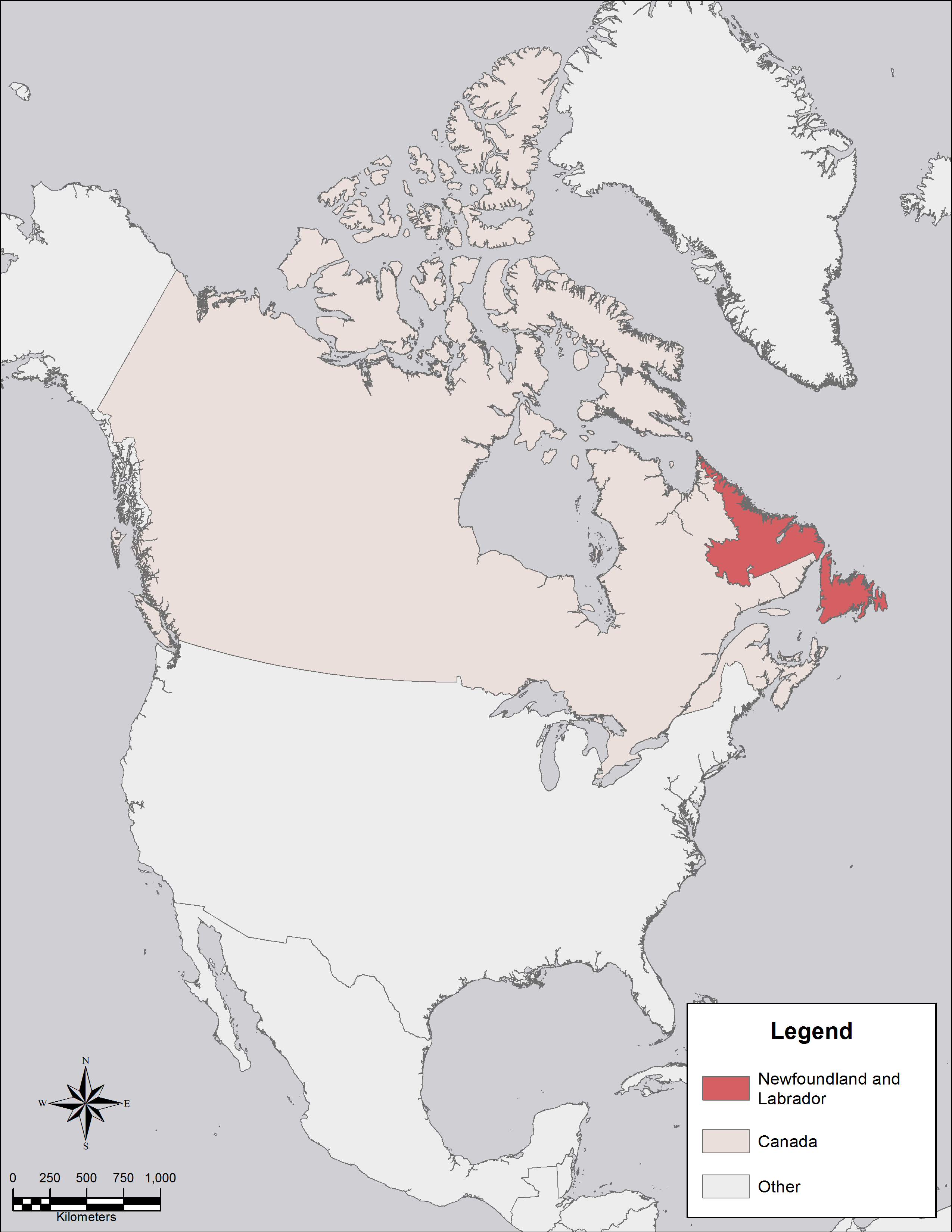
Quick Facts
| Population - October 2023 | 540,418 |
| Gross Domestic Product (GDP) (billions $, 2022) | 40.72 |
| Consumer Price Index (CPI) (% change since January 2023) | 2.5% |
| Persons, Employed (seasonally adjusted, February 2024) | 243,700 |
| Unemployment Rate (seasonally adjusted, February 2024) | 10.2% |
Quick Facts are sourced from the Newfoundland and Labrador Statistics Agency.
About This Place
Newfoundland and Labrador (NL) is located on the eastern edge of North America. By plane, we are just three hours from Toronto, less than three hours to New York, and five and a half from London. To put things in perspective, NL is a little smaller than California, slightly bigger than Japan, and twice the size of the entire United Kingdom.
The province is comprised of the island of Newfoundland and mainland Labrador. The island of Newfoundland covers 111,390 square kilometers (43,008 square miles) - an area that rivals the size of the three Maritime provinces of Nova Scotia, New Brunswick, and Prince Edward Island combined. With the addition of the vast territory of Labrador, the province covers a total area of 405,720 square kilometers (156,649 square miles).
Though NL is geographically larger than some countries, it has a relatively small population. Additionally about 40 per cent live in and around the capital city of St. John's. St. John's is the seat of government, as well as home to the House of Assembly of Newfoundland and Labrador, and the highest court in the jurisdiction, the Newfoundland and Labrador Court of Appeal.
A former colony of the then Dominion of the United Kingdom, NL became the 10th province to enter the Canadian Confederation on March 31, 1949, as "Newfoundland". On December 6, 2001, an amendment was made to the Constitution of Canada to change the province's official name to Newfoundland and Labrador.
To learn more about the people and places of Newfoundland and Labrador, visit Newfoundland and Labrador's Tourism Site.
